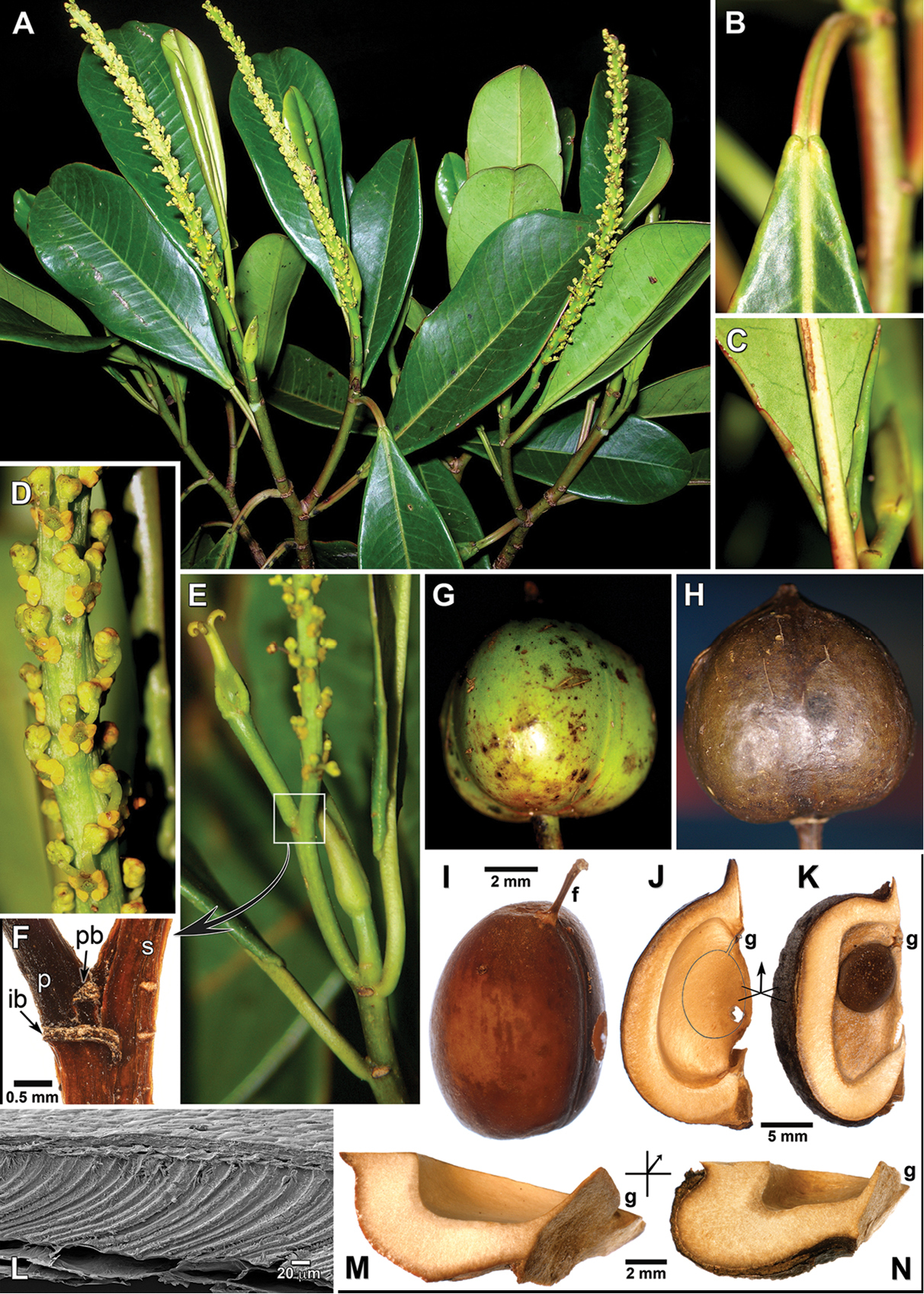
|
||
|
Morphology of Incadendron (A–J, L–M) and Senefelderopsis (K, N). A Habit, with paired branching and staminate inflorescences; note latex at damaged nodes B Leaf base (adaxial) with basal lobes C Leaf base (abaxial) with curled glandular margin D Staminate inflorescence with cymules subtended by glands; central flowers abscised leaving two lateral buds per cymule E Branch tip showing leaf-opposed inflorescence and stipule-enclosed renewal shoot F Summit of peduncle showing bract scars G Nearly mature green fruit H Mature brown fruit I Seed with funicle; holes in I & J come from insect predation J Mericarp valve with outline of seed position K Mericarp valve with a seed; funicle obscures gap L Seed coat, transverse view (SEM) M Pericarp profile and top half of valve (exocarp removed) N Pericarp profile and top half of valve. (Abbreviations: f = funicle, g = gap, ib = inflorescence bract scar, p = pistillate, pb = pistillate bract scar, s = staminate. Orientation of M–N relative to J–K shown by diagrams where x-y = plane of cross section, z = apically pointing arrow. (Source: Incadendron, A–E, G–HFarfan et al. 1049, 1131; FFarfan et al. 706, MO; I–J, MMonteagudo & Ortiz 4605, US; LMonteagudo et al. 4484, US. Senefelderopsis croizatii, K, NRadosavljevic 296, US). |